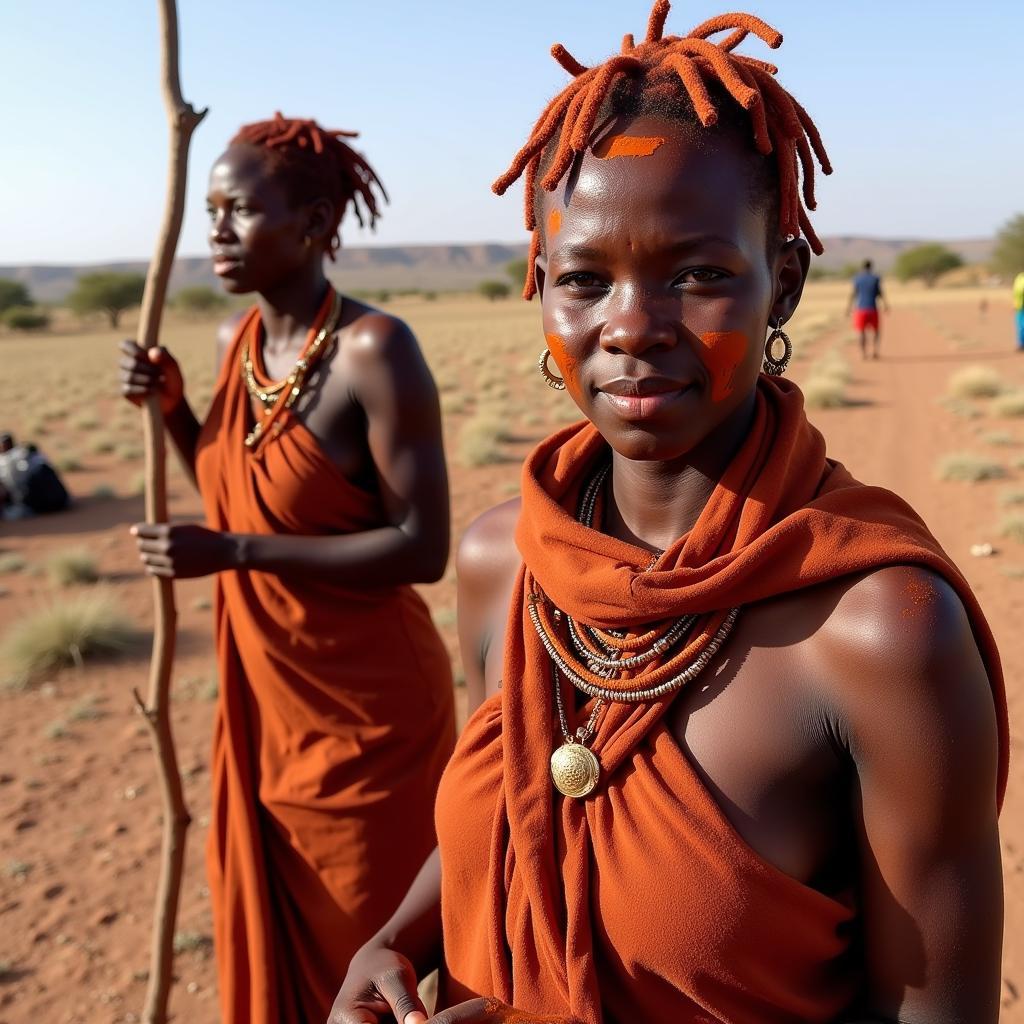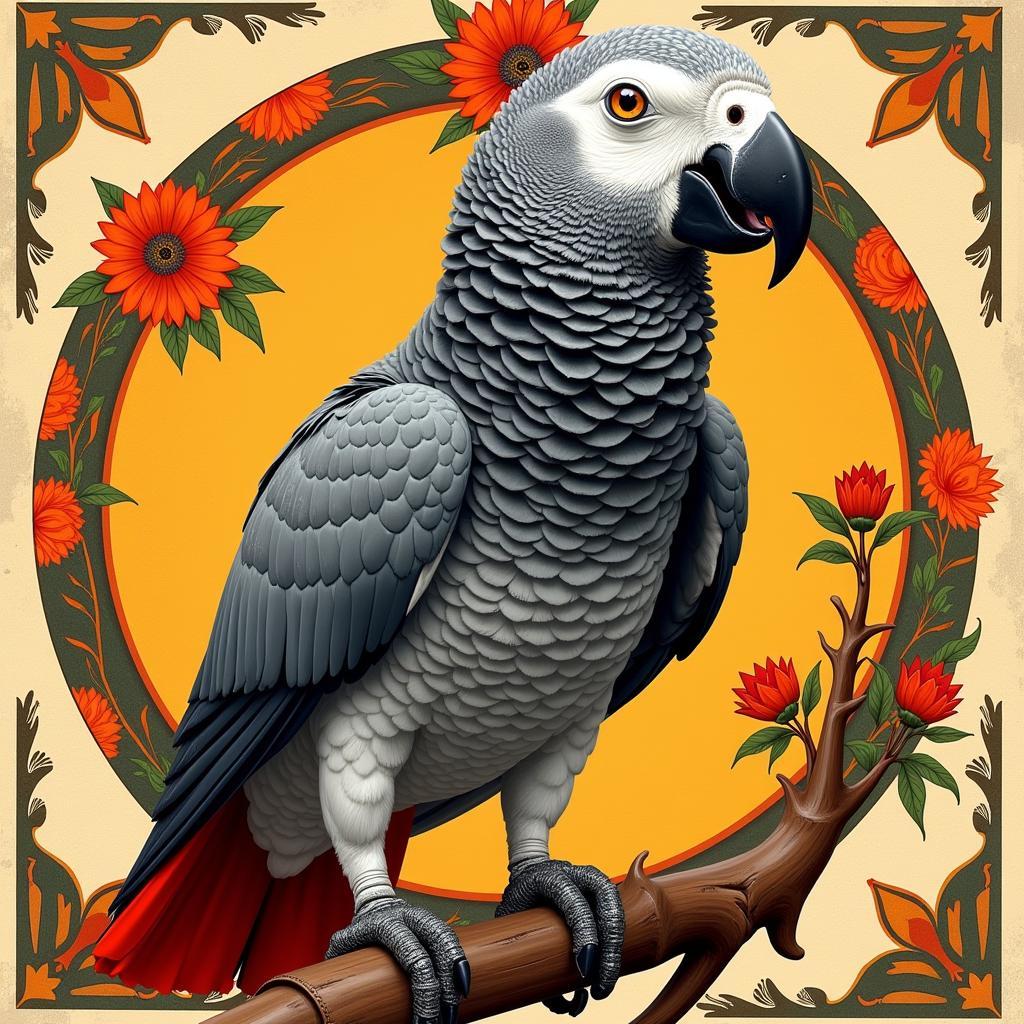Exploring the Fusion of Cultures: African Indian Clothing
African Indian Clothing represents a vibrant tapestry woven from the threads of two rich cultures. This intersection of African and Indian aesthetics creates unique garments that tell a story of shared histories, cultural exchange, and evolving fashion trends. From the bustling markets of Durban to the vibrant streets of Nairobi, this fusion of styles reflects the dynamic interplay of tradition and modernity. After centuries of interaction, the blending of these two distinct cultural identities is evident in the captivating world of African Indian clothing.
The presence of Indian communities across Africa, particularly in East and Southern Africa, has led to a fascinating cross-pollination of styles. Indian textiles, embroidery techniques, and silhouettes have found their way into African wardrobes, often adapted and reimagined to reflect local tastes and traditions. This fusion isn’t merely a blend of fabrics and designs; it embodies the spirit of cultural exchange, creating something entirely new and unique. For example, the vibrant Kanga cloth, a staple in East African fashion, often features Indian-inspired motifs and patterns. african college students kolhapur
The Influence of Indian Textiles on African Fashion
Indian textiles, renowned for their intricate designs and vibrant colors, have significantly impacted African fashion. Silk, cotton, and brocade fabrics, traditionally used in Indian garments, are now incorporated into African designs, adding a touch of opulence and elegance. The use of these materials not only introduces new textures and colors but also adds a layer of cultural significance to the garments. These textiles, often adorned with intricate embroidery and embellishments, elevate everyday wear into something truly special. The popularity of these hybrid styles showcases how cultural exchange can enrich and diversify fashion traditions.
Embroidery and Embellishments: A Shared Heritage
The art of embroidery and embellishment plays a crucial role in both African and Indian clothing traditions. From the intricate Zari work of India to the vibrant beadwork of many African cultures, these techniques add a touch of artistry and individuality to garments. The fusion of these traditions has led to innovative designs, combining different embroidery styles and materials. This blending of techniques creates garments that are both visually stunning and culturally significant.
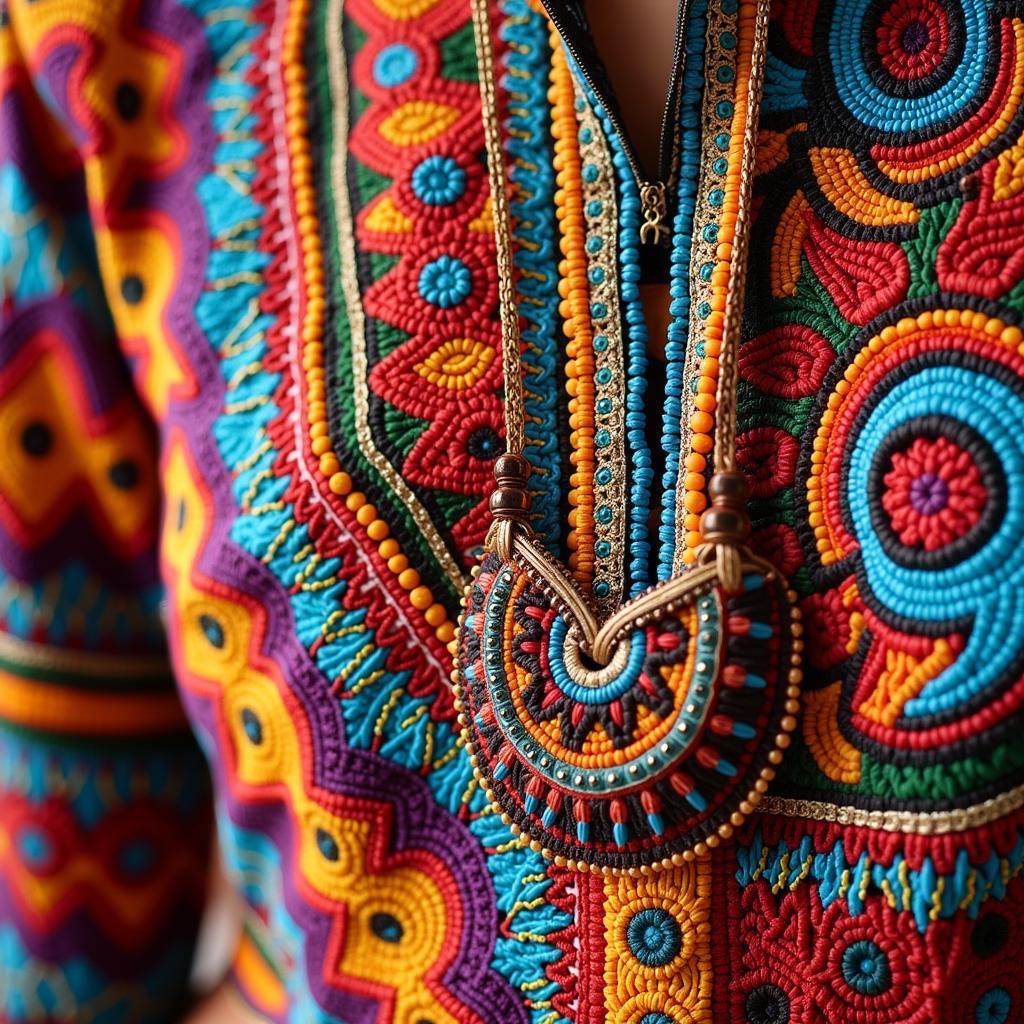 Intricate Embroidery Details on African Indian Clothing
Intricate Embroidery Details on African Indian Clothing
African Indian Clothing: A Symbol of Identity
African Indian clothing is more than just a fashion statement; it’s a powerful symbol of identity. For many people of Indian descent in Africa, these garments represent a connection to their heritage and a celebration of their dual cultural identity. It’s a visual representation of belonging, bridging the gap between two worlds. This clothing also allows individuals to express their personal style while honoring their cultural roots. It serves as a reminder of the shared history and ongoing cultural exchange between Africa and India.
From Sarees to Khangas: Adapting Traditional Garments
The saree, a quintessential Indian garment, has also undergone a transformation in Africa. While maintaining its elegant drape, it’s often styled with African accessories and headwraps, creating a unique Indo-African look. Similarly, the Kanga, a vibrant rectangular cloth commonly worn in East Africa, has embraced Indian-inspired prints and motifs. african landscape facts These adaptations showcase the fluidity and adaptability of both cultures’ fashion traditions.
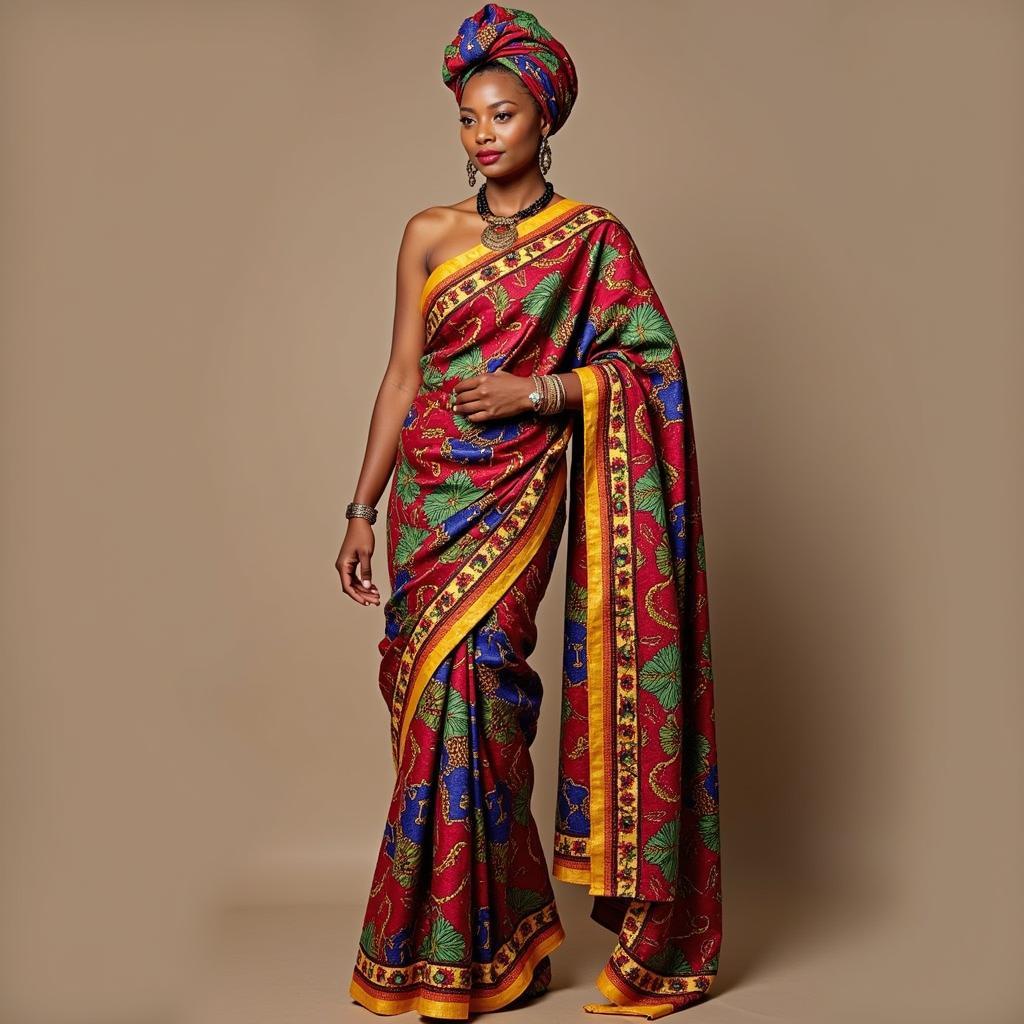 Fusion of Saree and Kanga Styles
Fusion of Saree and Kanga Styles
The Future of African Indian Clothing
African Indian clothing continues to evolve, reflecting the dynamic nature of fashion and cultural exchange. Contemporary designers are experimenting with new fabrics, silhouettes, and embellishments, pushing the boundaries of this unique style. This fusion of cultures is not static but a vibrant and ever-changing expression of identity and creativity.
Celebrating Diversity Through Fashion
African Indian clothing is a testament to the beauty of cultural diversity. It highlights the power of fashion to bridge cultural divides and create something new and beautiful. By embracing the richness of both traditions, this unique style celebrates the shared history and ongoing dialogue between Africa and India. african kimono dress
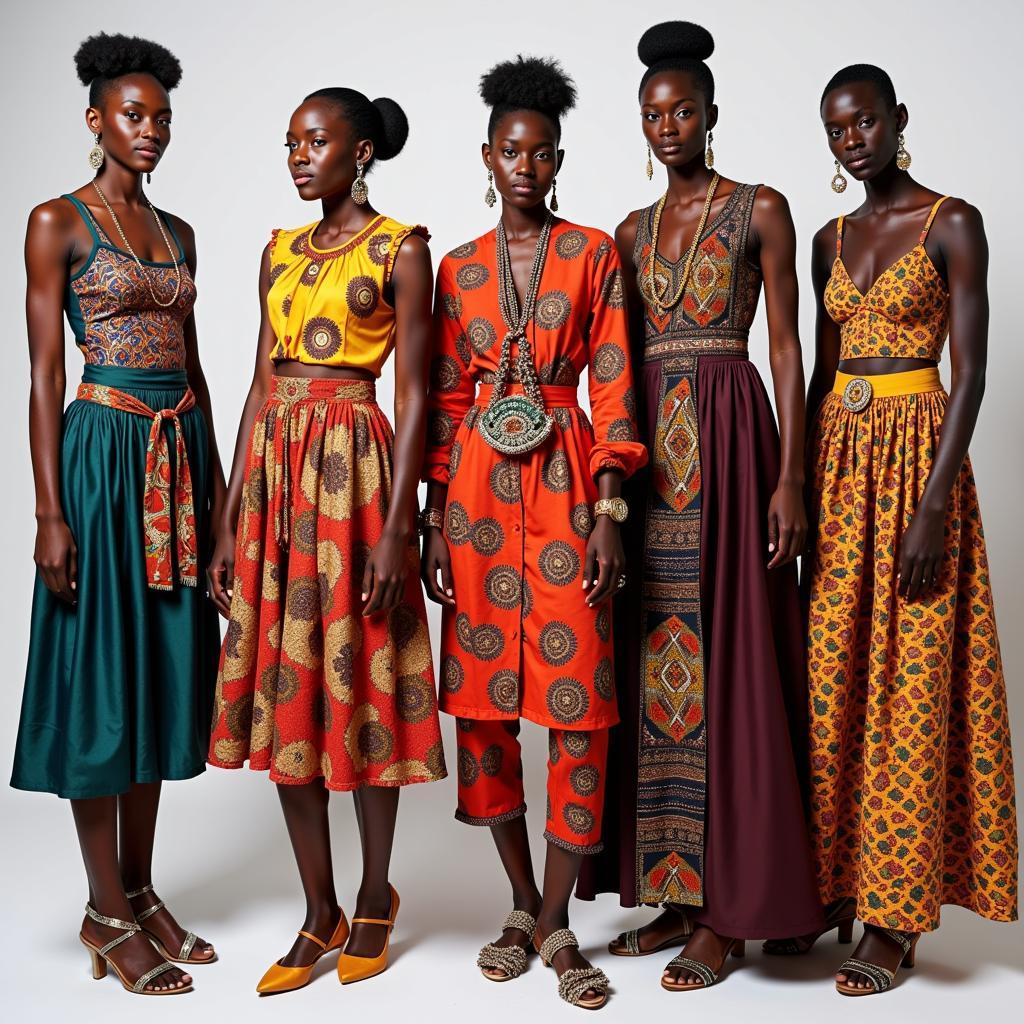 Contemporary African Indian Clothing Designs
Contemporary African Indian Clothing Designs
In conclusion, African Indian clothing represents a fascinating intersection of two vibrant cultures. From the intricate embroidery to the adaptation of traditional garments, this fusion of styles reflects a shared history and ongoing cultural exchange. As designers continue to innovate and push boundaries, the future of African Indian clothing promises to be even more vibrant and diverse.
FAQ
-
What is African Indian clothing?
African Indian clothing is a blend of African and Indian fashion traditions, reflecting the cultural exchange between the two regions. -
Where can I find African Indian clothing?
You can find African Indian clothing in various markets and shops, particularly in East and Southern Africa, as well as online. -
What are some common fabrics used in African Indian clothing?
Common fabrics include silk, cotton, brocade, and Kanga cloth, often embellished with intricate embroidery and beadwork. -
How is African Indian clothing a symbol of identity?
It represents a connection to heritage and celebrates the dual cultural identity of many people of Indian descent in Africa. -
What are some examples of adapted garments?
The saree, styled with African accessories, and the Kanga, featuring Indian-inspired prints, are examples of adapted garments. -
What is the future of African Indian clothing?
Contemporary designers are experimenting with new techniques, ensuring a vibrant and evolving future for this unique style. -
How does African Indian clothing celebrate diversity?
It highlights the power of fashion to bridge cultural divides and create something new and beautiful, celebrating the shared history between Africa and India.
Need assistance? Contact us 24/7:
Phone: +255768904061
Email: [email protected]
Address: Mbarali DC Mawindi, Kangaga, Tanzania.
